|
Meet Patients
"There is no greater agony than bearing an untold story inside you."
– Maya Angelou
Finally, a platform to share your journey. Individuals, caregivers, professionals, and a community of support can RISE UP, share personal experiences that can help raise awareness and support for thousands of individuals, families and others touched by Turner Syndrome who would otherwise be nameless and alone on a journey shared by many. Give voice to your experience. Let your voices be heard.
Share your story through the My Story Awareness Campaign
Abbie
Carly Joy
Kym
Marissa
Alyssa
Patrice
Sarah
Jennifer
Eliana
Laurie
Remembering Jane
Cathy
Nicole
Ella Rose and Anna Sophia
Abbie
ABBIE'S CHANCE
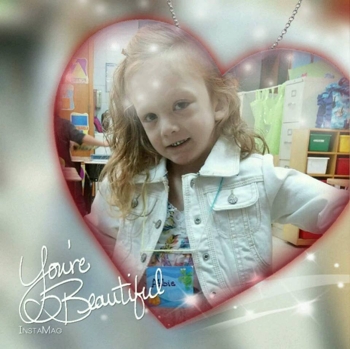
A 1% chance is all they that they gave
I made it, I'm here, I know I'm brave.
Turner's Syndrome is rare, I know I have this
The challenges, the obstacles, I will not miss.
I made it , I'm here, God has a reason
The struggle, the fight season after season.
I will not fail, I will do my best
My life is a journey, I will pass this test.
I may be little, I may be small
It only makes me stronger after all.
The doctor's recommended that my mommy abort
My mommy refused, I'm on the playing court.
I'm small, I'm strong, as you can see
I accept this journey that's meant for me.
I have a great mommy, her name is Macey
She gave me life, I will win this racey.
Turner's Syndrome I have, yes it is rare
I'm here, I made it all because you care.
Life is great, it's not to shabby
I'm here, I made it, my name is Abbie.
By: Gwen Fiveash
03/09/2016
back to the top
Marissa
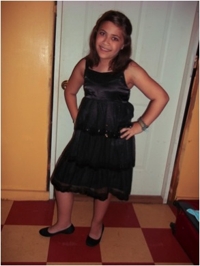
Marissa, age twelve, was diagnosed with Turner Syndrome at birth and began seeing an endocrinologist when she was only two weeks old. She has had multiple health issues both related to her Turner Syndrome and unrelated but doesn’t let her health conditions define her life. She wants to become a veterinarian and loves going to specialized camp for Turner Syndrome in the summer.
Learn more about summer camp
back to top
Kym
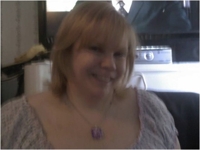
Kym, married and employed as an educator's assistant, had a late diagnosis at 16. She, like many others with Turner Syndrome, has a nonverbal learning disability. She is very active in advocating for legislation that will benefit individuals with Turner Syndrome and also exercises regularly engaging in pilates and kickboxing.
Join Kym as an advocate for Turner Syndrome.
Volunteer application
back to top
Alyssa

Alyssa (far right) with relatives, age 21
Alyssa was diagnosed at birth with Turner Syndrome when she was born with puffy hands and feet. She had health issues and learning issues growing up and had a math tutor throughout college. Alyssa has a positive outlook on life and will be graduating in June 2013 with a nursing degree.
See more information about Lymphedema (puffy hands and feet)
back to top
Carly Joy
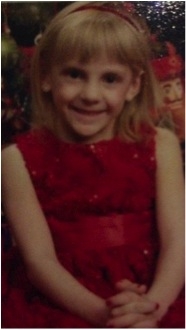
Carly Joy, age six, had a difficult birth and was diagnosed at birth with Turner Syndrome. In her early childhood she had a number of health issues and was in and out of the hospital. She is now in preschool and loves to dance and do gymnastics. She is in an advanced dance class with first and second graders and loves the outdoors.
If you would like to share your story, the Foundation has created a website portal, MY STORY. Publishing your story online can help others learn more about Turner syndrome through your life's experience.
back to top
Patrice
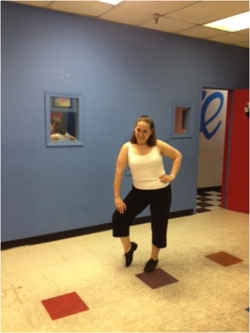
Patrice, age 31
Patrice was diagnosed at the age of 10 and has always had a passion for dance. Today she is a dance teacher, and she wears hearing aids to help improve her hearing.
back to top
Sarah Sweet Sixteen and Uniquely Me

Sarah comes from a large and faithful family and is the youngest of six children. Sarah recently celebrated her sixteenth birthday and traveled the U.S. over the summer break to visit with friends and faraway places. She attends a performing arts high school and is open to discussing her condition through this self-produced video story depicting a powerful message that life is filled with wonder and many possibilities.
View Sarah's Story
back to top
My life, my story as a Turners’ woman. I am 46 year old Turner's woman, and no longer live in denial.
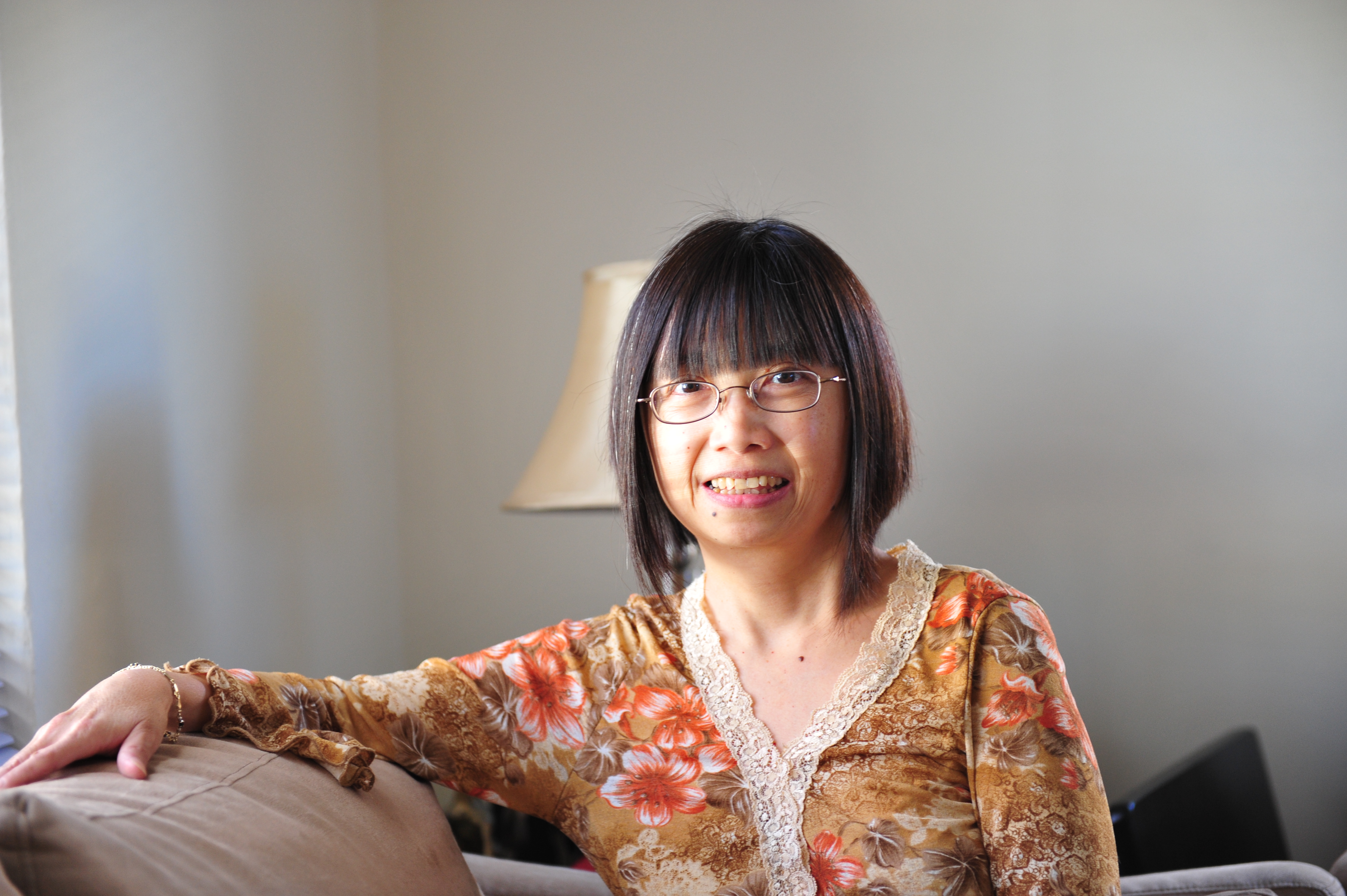
All through childhood I would say I was a happy child because of my innocence. I was always small starting at birth. I am the 2nd of 4 children. My older sister is only 13 month older than me. Even at the age 7, my sister was already a head taller than me. At age 13, I was like any other teenager waiting for my period. I even read the book ”Hello God, It’s Me Margret”. My period never came.
I thought maybe I was just a late bloomer. I don't know whether it was my sister or aunt who said something to my parents about how small I was for my age. She said, “There is definitely something different about her. You have to find out what is wrong.” I stood about 4' 2” at the age of 15 or 16 years old wearing a youth size 7 pants and size 1 children shoes. I basically looked like the height and age of my youngest brother who was 7 yrs old at the time.
I finally went to Cornell Medical Center in NYC. They did a battery of tests and did a karyotype to determine a diagnosis of Turner syndrome. During the next year it was like a world wind. I was probably in shock to know and understand what was going on. Both my parents and I let the doctors do whatever they wanted with me without asking any questions. I was very overwhelmed without knowing it. I remember having to pose for a picture with masking tape over my chest with just my underwear on and my arms out. This is the picture they show in the textbooks. How attractive, isn't it? At the time I didn't know what to think.
Throughout this process I think I was in shock. For the next year they treated me with HRT and androgen for my height. My family never spoke about my condition or how I felt about it. It was one big secret. I feel it is partially due to the Asian culture where if you are not perfect you get rid of it. The Asian culture, in my opinion, is a very cold culture and very backwards. I dread to think what my mother would of done if she fully understood what condition I had especially if she had found out when she was pregnant with me. She probably would have aborted me.
Soon after a year of treatment I went off to college. I needed to come back to NY every 3 month for monitoring the HRT. I finally started to look just a little more like my age. I subconsciously decided that I didn't want to be different, and was sick of going back to NY to see the endocrinologist every 3 months, that I decided to get my HRT medication from a gynecologist instead. This made me feel a little better because every female has to see a gynecologist! Starting college was also a turning point in my life where my girlfriends were now more interested in seeing boys. I couldn’t relate, because up until that point I looked like I was only10 years old.
After I graduated college, I met this wonderful man, but my parents never spoke to me about how to tell anyone, especially the opposite sex, how to tell/what to say to them about my condition. I ignored it. I was in denial about my condition. Subconsciously, I thought it was okay to keep this huge secret from him. I did tell him I couldn't have any children, but I didn't tell him the reason why. I was like any female who wanted to get married, have the white picket fence, and have children.
Things got really bad in my early 30's as all of my friends and siblings started having children. I thought a stork would come one day and hand me a baby. I was living in a fantasy world. It is not their fault but every time I saw siblings and friends with a baby, it hurt so much and broke my heart. Don't get me wrong, I was genuinely happy for my siblings and friends, but I was hurting for myself so bad inside. I was still in denial. Subconsciously, as long as my late husband’s brother didn't have any children it was o.k. not to have any children nor did I feel any guilt not to be able to give my late husband children. The turning point came when his youngest brother did finally get married at age 40 and had a son. At this time I was also turning 40. With all my late husbands siblings having children and he was the only one without one, I felt guilt and took a hard look at why I didn't have children.
One day I decided to lookup Turner syndrome on the internet while at work. I was already anxiety ridden that I was just thinking, oh my gosh, oh my gosh. Look at all these medical conditions!!!! There was no turning back. I wasn't in denial anymore. This was huge for me. I didn't have anyone to turn to. I needed to talk to someone so I called my brother. I was a basket case at work with my realization. I think my brother was shocked at why I was calling. No one in my family or siblings ever spoke about TS. This was the first real discussion I had with him, at the age of 40. It was more important to keep this secret than to realize medical complications I may encounter being TS. I quickly found a cardiologist to check for a coarctation and aortic arch.
At this time I still didn't tell my late husband. I didn't know how. I was also very afraid he would leave me. I was having panic attacks about keeping this big secret. My problem at this time was what happens if the test result of my heart shows that I needed surgery. How was I going to tell my late husband? The hospital was trying to give me a MRI of the heart. All the feelings of all those doctor visits when I was first diagnosed was all coming back to me. I was so upset sitting there waiting for the MRI and felt very much alone. I was having panic attacks because I was thinking what happens if I need surgery? How do I tell him. I couldn't believe I lived with him all these years without feeling any guilt about my TS. This is what I learned from my culture/mom. My panic attacks were getting worse. I couldn't take it anymore so I woke up on a Saturday morning at 8:30 and just told him to get it off my chest. He just said “ Is that it?” Later on when we were able to talk about it openly, he told me based on what he read on the internet he agreed what I had was pretty bad. After being open about it finally, it was a necessity to meet another TS woman. I met my first TS woman at age 41. For the first time when I saw a picture of myself, I saw a picture of a Turners Woman.
Little did I know my troubles were only beginning not about my condition, but about my life. My late husband was battling bi-polar and had many breakdowns in the last 20 yrs I have known him. His condition was the same as mine so far as educating people, how ashamed people are in talking about both of our conditions, and how ignorant people are about our conditions. In reality, if TS patients fail to monitor and take care of their heart, it could be fatal. In bi-polar, if you don't take care of the breakdowns you become suicidal, and you can end up taking your own life. Never in my wildest dream did I think I would marry a man who had mental illness or how huge it would play in life like my own Turners syndrome. My husband committed suicide in July 2008 because he was in denial, he didn't take his medication, and was ashamed of his illness. With this tragedy, it really put Turners syndrome into perspective for me.
I had to sell my house because he took his life in the house we shared. It was also not practical for a single woman to manage a large house. In 2009, the company I worked with for over 15 yrs was moving the job functions of the NY office back to the parent company in the UK. They were letting all of us go. I felt like I lost everything.
The moral of the story is, I am a survivor. I am still standing. My hope and wish is to get my life back on track one day at a time. With the struggles and tragedy in my life the past 2 yrs., it made my issues of infertility, short stature, and people not taking me seriously because I look so young seem like nothing compared to my troubles today. Since I came to my realization of my TS, I haven't had a chance to grieve for the children I could never have. Hopefully once things get back on track I will be able to do that. I was told this is very important for the healing process.
I am convinced I am here on earth for 2 reasons. It is to educate people and be an advocate for Turners syndrome and mental illness. I hope my story will inspire the people who are reading it.
back to top
Eliana

Eliana, age 27 months
Eliana was diagnosed with Turner Syndrome at birth and has had very few health issues so far. Her one main issue was a vascular malformation in her foot. She has a great team of doctors and a loving mother and it looks like she will have a bright future ahead of her.
back to top
Laurie
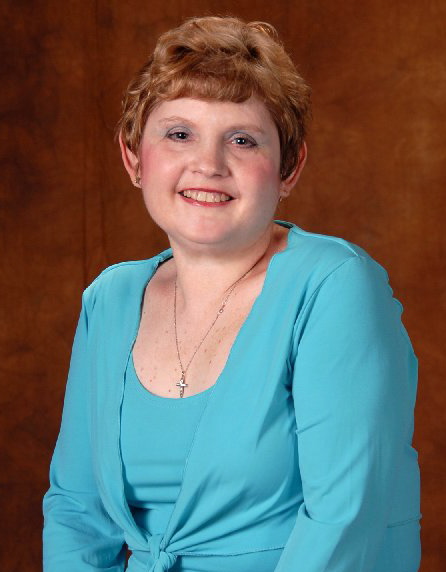
I am 49 years old, and I was diagnosed with TS at age 14. At that time, I had never even heard of TS. In addition, there was very little information (even in our local Medical Library) about it. There also was no Turner's Syndrome Foundation/Society or support groups available. I was started on hormone replacement therapy shortly after diagnosis, and since this was back in 1975, HGH was not used for treatment of TS at that time. I was able to gain approximately three inches in height from when I started the HRT, and I am 4' 10". Overall, I have done well with the Turner's Syndrome. I should also mention that I did have surgery for coarctation of the aorta repair at age six. After that, I had a preliminary genetic test, which was negative for Turner's. However, when I had a follow-up genetic test at age 14 it showed that my second X is malformed and not missing, which is why I got the negative test result back when I was a child.
I did very well with the TS for many years without any real complications or problems until 1994, when I was diagnosed with Crohn's Disease. I am happy to say that I am now in remission from the Crohn's, and my health is stable despite the fact I was also diagnosed with an Immunoglobulin Deficiency or Primary Immune Deficiency Disorder (PIDD,) and I subsequently began IVIG treatment once monthly in 2005. In May 2009, I began Vivaglobin treatment, which is a medication made from human immunoglobulin that is self-administered subcutaneously once a week at home. Then earlier this month, I began treatment with Hizentra, which has replaced the Vivaglobin. I have had very effective results with the Vivaglobin/Hizentra treatment, and my overall health has improved because of having fewer infections. However, I am disabled, and I have not worked since 1994 because of the combination of multiple chronic health issues. Of course, I am aware that both the Crohn's Disease and the Immunoglobulin Deficiency/PIDD are related to the Turner's Syndrome. I am also very fortunate to have wonderful doctors and excellent medical care along with a loving, supportive family and friends. Without proper medical care and the love and support of my family and friends, I don't know what I would do. It has been my experience that appropriate, ongoing medical care and a strong support system are an integral part of climbing the "Turner's Syndrome Mountain."
If you would like to share your story, the Foundation has created a website portal, MY STORY. Publishing your story online can help others learn more about Turner syndrome through your life's experience.
back to top
Jane was born on June 9, 1963 at Holy Name Hospital in Teaneck, NJ, the youngest of 3 children.
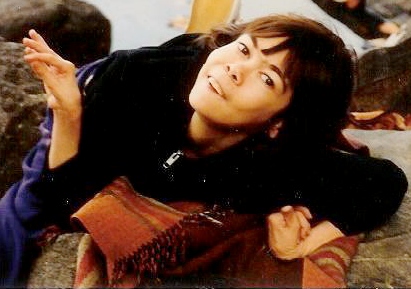
On August 12, 2011, we lost her. The shocking news was that she stopped breathing during a routine seizure, and despite getting CPR from professionals immediately, they couldn’t revive her. She was only 48 years old, the baby of our family, the sunshine of our life, adored beyond belief, and it still confounds us.
Jane was apparently born with Turner Syndrome at birth, but no one, no one noticed it—even after the best of medical professionals diagnosed her birth as perfect. At four months old, Jane started having infrequent episodes of choking to the point of turning blue. We made many visits to our pediatrician who insisted it must just be a cough since he never ‘saw’ an episode in his office. It was so scary—because Jane had passed all the routine tests and was gaining weight, the doctor didn’t believe us and sent us home.
Shortly thereafter, we made a frantic call to our family internist. We told him how Jane turned blue while choking and that we feared for her life! Our doctor came to our house and witnessed Jane having a choking episode. He quickly turned her upside down, slapped her back and told us she had to be hospitalized immediately. He arranged the hospital admittance for the following morning to Pascack Valley Hospital in Westwood with instructions for us to stay awake in case of another event.
After a weeklong workup, a barium swallow test showed Jane’s esophagus being pulled to her left. They concluded it was an aortic valve circling her esophagus, and surgery was needed at Columbia Presbyterian Babies Hospital in New York. Within 48 hours, the team of Heart Doctors at Babies Hospital scheduled Jane for what was called a “vascular ring” surgery (also called aortic valve dissection). Of course we were so happy that she came through it beautifully and were told she would be normal from now on.
Looking back, we wonder why a chromosome test wasn’t included. We ask ourselves now if it could have prevented a lot of heartache and pain.
When Jane was 2 years old, we observed odd behavior that frightened us again. The heart team at Babies Hospital advised us to see a neurologist at the Neurological Institute at Columbia Presbyterian. The top doctor there ran a ten-day neurological workup. He found oxygen loss to the brain in the motor area, presumably caused by ‘cerebral insult’ associated with the thoracic surgery. This meant she was now neurologically and physically impaired, as a result of the surgery to repair her cardiac anomaly (which we now know was from TS). He classified Jane as having Cerebral Palsy.
Although we realized this meant a lifetime of special care - we were still thankful she would be alive! Nonetheless, looking back we can ask again, why didn’t anyone think of a chromosomal test?
At 13 years old, with no signs of imminent puberty, and her stature remaining quite short, Jane was finally given a chromosomal test. We were told that a normal female baby has 46, or 23 pairs of chromosomes and two “X chromosomes. Sometimes an error occurs resulting in a baby with 45 chromosomes and only one “X”. This child will have Turner Syndrome.
In Jane’s case, 90% of the cells showed a normal appearing 46, XX female chromosome complement, the remainding 10 percent of the cells had a 45, X karyotype. This finding is consistent with a clinical diagnosis of ‘mosaic” Turner Syndrome. Her doctors did not suggest any hormone therapy – at that time it was a controversial issue. Most expressed a negative reaction when we asked about it.
However, it never sat right with us that Jane was not getting any treatment for TS. So when Jane was 22 years old, Mom arranged a consultation with the Director of the Genetics Clinic at Babies Hospital who analyzed her chromosomal test and told us that if the diagnosis is made before puberty, the patient may be given hormone treatments to induce breast development and menstruation. It does not make the patient fertile, but is done chiefly for psychological reasons. Forget about giving Jane growth hormones—at 22 years old, it was too late.
Mom researched the subject further, looking for some answers in the hopes that it might not be too late to somehow help Jane. It was difficult because Jane was atypical, even for Turner. Mom came across an article featuring a woman with TS who was encouraging readers to learn more about TS by contacting the Turner Syndrome Society located in Minneapolis, Minnesota. Mom contacted them right away and was sent a white paper that outlined the latest medical information on TS.
Finally we were able to learn about the care of adult women with TS. There was a growing body of evidence that estrogen plus progesterone replacement therapy would prevent osteoporosis as well as improve the quality of life for these women. Mom contacted one of the authors and shared Jane’s story, and he was adamant that Jane be started on hormone therapy. Despite this advice from a ‘thought leader’ in the field, we could not convince her doctor of the benefits.
This led Mom to find an endocrinologist who agreed to take over Jane’s healthcare (this was a big deal, because Jane was under the care of a GP at a residential facility where she lived, so taking her to our own doctor was a bold move). Jane started getting estrogen at 37 years old. This helped Jane a great deal initially, but was not enough to prevent osteoporosis, which resulted in some fractures that further disabled her and negatively impacted her quality of life.
What we now know and wish we had known a whole lot earlier, we found out from the Turner Syndrome Foundation. The Turner Syndrome Foundation are striving to ensure that TS women like Jane have a happy ending to their stories. Information is available and should be widely distributed to all school nurses and doctor’s offices.
* Turner Syndrome (TS) affects approximately one in 2,000 live-born females.
* Diagnosis of TS should be considered in any female with unexplained growth failure or pubertal delay, including left-sided cardiac anomalies, and a whole host of other symptoms listed in the CLINICAL PRACTICE GUIDELINE for girls and women with Turner Syndrome issued in 2006 by the National Institutes of Health.
Our Turner Syndrome precious Janie could have had a better life than she did, but she is remembered by so many for her sweet, friendly, and angelic personality. Our love for her is so deep, we wouldn’t have wanted to miss one minute of her short time with us here for anything in the world.
back to top
Cathy's Story: A Look Back
Where do I begin...?
I am 60 years old. I was diagnosed with Turner Syndrome at the age of 21. I started having my period at 12 years old. At about the age of 16, my periods started becoming more and more irregular. When I was maybe 17 or 18, I missed my period for approximately six months. My parents automatically assumed that I had to be pregnant because after all, no one goes that long without having a period unless they are pregnant. They took me to our family physician, which was terrible and humiliating for me. When I came into the examination room, the doctor asked my mother what the problem was. She said, “ Give her the rabbit test, I think that she is pregnant. “ He asked me some questions and then sent me into the bathroom to give a urine simple.
When we got home, the house was full of tension and no one said much to each other until the doctor called to say that I was not pregnant. Then everyone was happy, except me, I was very upset with my parents for not trusting me. Our family doctor gave me hormone injections to make my period come down, unfortunately, the medication made me sick, so I begged my mother not to take me back, and she agreed.
When I was 21 I was working at a day care center and was in the play yard with a group of children when I began to have severe stomach cramps so I drove myself to the hospital. After a long wait in the emergency room, I saw the doctor. He said, “ I know why you have cramps, you have your period!” I never felt anything at all while I was in the yard or while I was in the waiting room. The doctor told me that the hospital across the street was opening a clinic for women who had menstrual problems and asked me if I would be interested in going there if he could get me an appointment with them, and of course I said, “Yes”.
It took quite a while to get an appointment, but I finally did get one, and after a battery of tests, the diagnosis was finally made. The doctor asked me to bring my mother to see him and he would answer any questions that she had. We went to see the doctor; I could tell that my mother was not listening to a word that he said. To this day, she has never asked me how I feel about the diagnosis, nor do we ever discuss it at all.
You see, it is bad enough dealing with a diagnosis such as Turner Syndrome at the age of 21, being told that you cannot have children and being in love all at the same time. Not to mention the fact that I had no support at all from my family. So not only was I hit with a devastating diagnosis, I have not received any support from my family and I lost the love of my life as well. He did not understand why we could not consummate our relationship.
Some of the worst things about having Turner Syndrome are; being short and not being able to reach things that are too high to reach, and not being able to find clothes that fit properly, not being able to have sex comfortably, if at all, and being infertile.
So I say to the parents of a Turner girl, love her, support her, listen to her and talk to her. Accept her for who she is. I believe that is the only way to ensure that your daughter grows up healthy, happy and whole.
back to top
Nicole's Story: The Path

Once she completed college she ran for city council in her hometown of Sergeant Bluff, Iowa, and won a position. She was the youngest female member of the council in the town’s history. read Nicole's story
If you would like to share your story, the Foundation would like to speak with you. Publishing your story online can help others learn more about Turner syndrome through your life's experience. Contact info@tsfusa.org or call 1-800-594-4585. Thank you!
Ella Rose and Ana-Sophia

I only had the opportunity to meet Ana-Sophia Ward briefly over a video call while talking with her mother, Penny, it was immediately clear to me what a wonderful young girl Ana-Sophia is and what an inspiring woman she will grow to become. Ana-Sophia was recently diagnosed with Turner Syndrome, but she’s already proven that her newfound condition does not define her. Like many other young girls I have spoken with about their experiences with Turner Syndrome, Ana-Sophia was happy, talkative, and energetic. Her energy was contagious, and I couldn’t help the smile that stretched across my face during our short encounter.
Although Ana-Sophia and her family now have the knowledge and tools to properly care and prepare for Ana-Sophia’s life with Turner Syndrome, Ana-Sophia’s diagnosis may not have occurred until her early teenage years, or perhaps even later, if it wasn’t for a bit of chance and a whole lot of love and dedication to the Turner Syndrome cause from a family friend--Crystal Brown and her daughter Ella Rose.
The Brown and Ward families first made a connection many years ago, during which time Crystal served as a nanny for Penny’s oldest daughter. Although the families live many miles apart today, their connection remains strong, particularly between their daughters Ella Rose and Ana-Sophia. When Ella Rose was diagnosed with Turner Syndrome and had to receive heart surgery, Ana-Sophia came to visit. From the picture above, you can feel the positive energy the two shared during this challenging time, and you can only wonder what it is they’re giggling about.
The Brown family has been deeply involved in awareness and advocacy efforts with regards to Turner Syndrome, so when a chance visit to the hospital after an unfortunate incident with Ana-Sophia’s finger revealed that she had a heart murmur, Crystal encouraged Penny to seek out a Turner Syndrome diagnosis. After seeing many specialists who did not believe Ana-Sophia had Turner Syndrome and receiving a negative karyotype for the condition, Penny pressed forward with Crystal’s support, until, finally, the diagnosis came: Ana-Sophia, like her dear friend Ella Rose, does indeed have Turner Syndrome.
This story is important not only because it emphasizes the importance of obtaining an early Turner Syndrome diagnosis, but also because it demonstrates the power of community activism and advocacy. Without the Turner Syndrome Foundation’s support, Crystal and Ella Rose may never have had the opportunity to share their knowledge about and experience with Turner Syndrome with Penny and Ana-Sophia, and Ana-Sophia may never have underwent the important surgery to correct her coarctation of the aorta. The story of these two families underscores the Foundation’s belief that awareness and activism on behalf of Turner Syndrome begins from the ground up. When we get the community involved, we truly can change lives. Just look at Ana-Sophia and Ella Rose.
As the Brown and Ward families clearly demonstrate, the Turner Syndrome community resides in a small world after all. It’s the Foundation’s goal to expand this community so that across the country, we’ll hear more inspiring stories about remarkable people like Ana-Sophia, Ella Rose, and their dedicated mothers.
back to top
|



